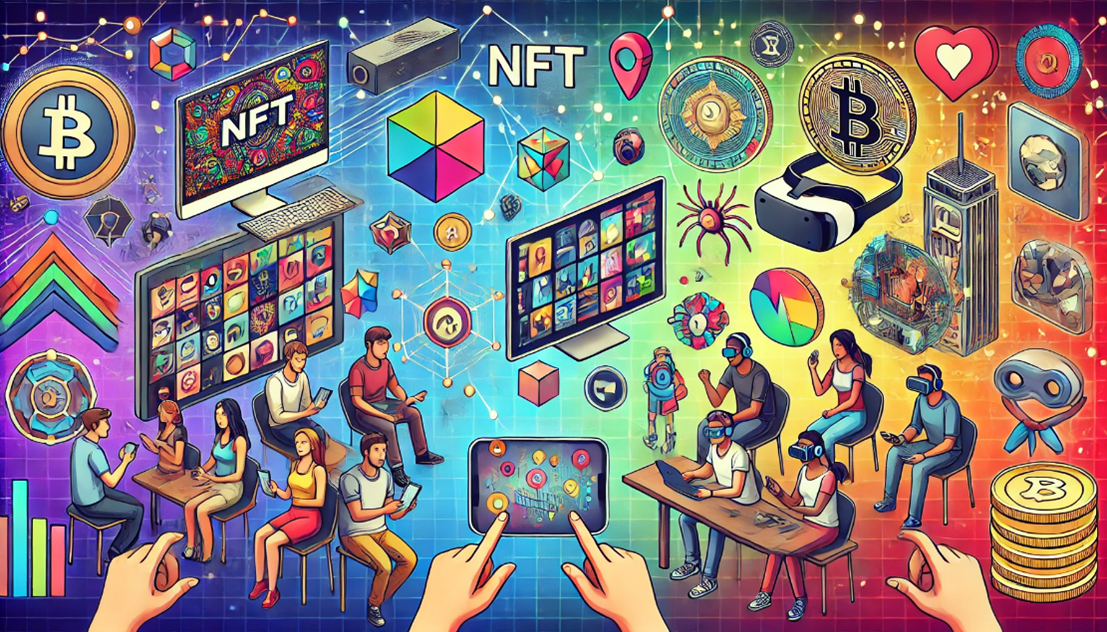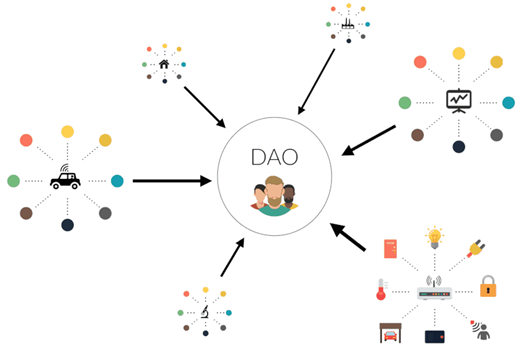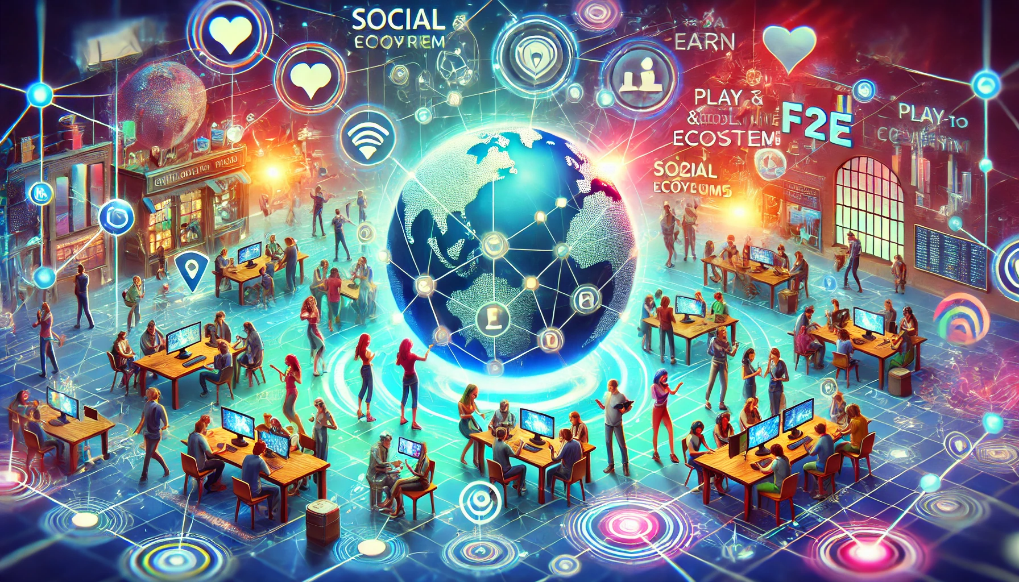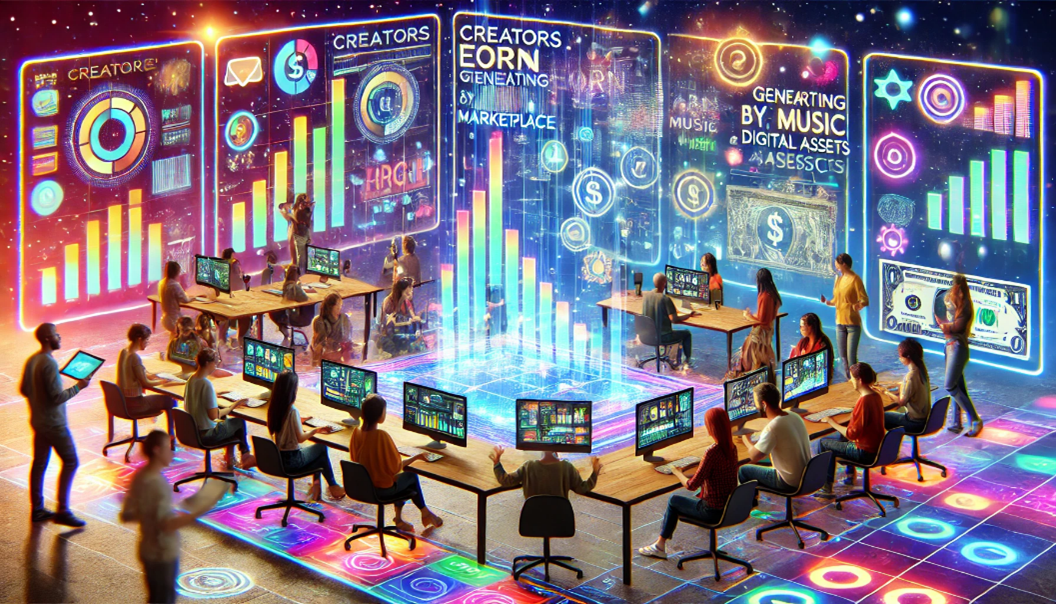Use of NFTs for unique, tradable in-game assets

Use of NFTs for unique, tradable in-game assets
by Nathaniel 02:33pm Jan 09, 2025
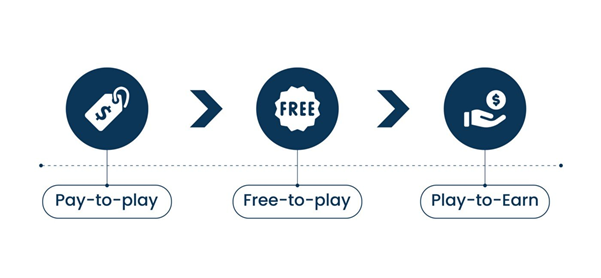
Use of NFTs for unique, tradable in-game assets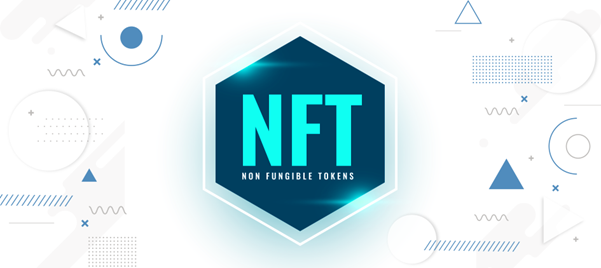
The use of NFTs (Non-Fungible Tokens) for unique, tradable in-game assets has revolutionized the gaming industry by introducing true ownership, scarcity, and the ability to trade these assets in decentralized marketplaces. Here's a breakdown of how NFTs are transforming in-game assets:
1. True Ownership
Player Control:NFTs grant players full ownership of in-game items. Unlike traditional games where in-game assets are controlled by the game developers and can be lost or taken away (e.g., through account bans), NFTs are stored on the blockchain, giving players permanent ownership of their digital items.This also means players can retain their assets across different platforms or games that support NFTs.
Transferable Ownership: Players can freely buy, sell, or trade their NFTs in secondary markets (e.g., OpenSea, Rarible). For instance, an NFT of a rare sword in a game can be sold to another player without needing the game developer's involvement, allowing for an open economy.
2. Scarcity and Uniqueness
Limited Editions:Game developers can issue NFTs for items that are intentionally limited in number, creating a sense of rarity and value. For example, a rare skin or collectible might be available as a one-of-a-kind or limited-edition NFT, making it a desirable asset.
Provenance:Since NFTs are minted with unique identifiers on a blockchain, it’s easy to track their provenance (history of ownership) and verify their rarity.This transparency boosts the value and collectability of items, especially for rare and sought-after assets.
3. Interoperability Across Games and Platforms
Cross-Game Assets:NFTs open the door for interoperability, where in-game assets can be used across multiple games that support the same standards (such as ERC-721 or ERC-1155 tokens on Ethereum). For instance, an NFT weapon or character skin acquired in one game could be used in another compatible game, allowing players to transfer their investments seamlessly across the gaming ecosystem.
Unified Wallets: Players can store and manage all their NFTs in digital wallets, providing a central location for all their assets, which can then be used or traded across various supported platforms and games.
4. Monetization and Tradeable Economy
Secondary Market:NFT-based assets can be traded in decentralized marketplaces, allowing players to profit from their in-game assets. For example, if a player obtains a rare item or collectible in a game, they can sell it to another player, potentially earning real-world money or cryptocurrency.
Play-to-Earn (P2E) Model: NFTs enable players to earn real-world value from their gameplay. For example, players can earn NFTs that represent items, characters, or land, and then sell or trade these items for cryptocurrency. This incentivizes players to engage more deeply with the game and invest time or money to acquire valuable assets.

5. Customization and Personalization
Player-Created NFTs:Players can customize or create unique NFTs within certain games, whether through designing their own skins, crafting special in-game items, or building new characters. These assets can then be tokenized as NFTs, allowing players to earn rewards for their creativity.
Character NFTs:Many P2E games offer customizable avatars as NFTs, where each character is unique in terms of its appearance, abilities, and in-game attributes.These NFT avatars can be traded or sold, and some games allow players to“level up” or enhance these avatars, increasing their value over time.
6. Permanent and Immutable Assets
Asset Persistence:NFTs ensure that in-game assets are permanent and cannot be altered or deleted without the player's consent. Unlike traditional digital assets,which can be lost if a game server is shut down, NFTs live on the blockchain and will persist as long as the blockchain exists.
Permanent History:The history of an NFT asset (e.g., its creation, transfers, and transactions) is publicly visible and verifiable on the blockchain. This ensures that all players and buyers know the history of an asset, which can be crucial for establishing value, especially for high-demand or rare items.
7. Incentivizing Collectibles and Trading
Collectible Sets:Some games release NFTs as part of collectible sets, such as special cards, characters, or skins. Players are motivated to collect all items within a set, and those who achieve full collections may be rewarded with rare bonuses or tradeable assets that hold substantial value.
Staking and Rewards:Players can stake NFTs for in-game rewards or benefits. For instance, certain NFT assets might provide players with passive income, such as receiving dividends or rewards based on the rarity or value of the asset they hold.
8. Enhancing Game Narrative
Story-Driven NFTs:NFTs can play an important role in enhancing the storytelling of a game. Items, characters, or even land plots represented as NFTs can hold special narrative significance within the game world. Players could acquire these assets as part of their journey, adding a layer of depth and personal connection to their experience.
Ownership of Game Worlds: In some metaverse or virtual world games, players can buy, sell, or trade virtual land as NFTs. The ownership of virtual land can provide long-term value, such as opportunities to host in-game events,monetize spaces, or create unique experiences for other players.
9. Integration with DeFi (Decentralized Finance)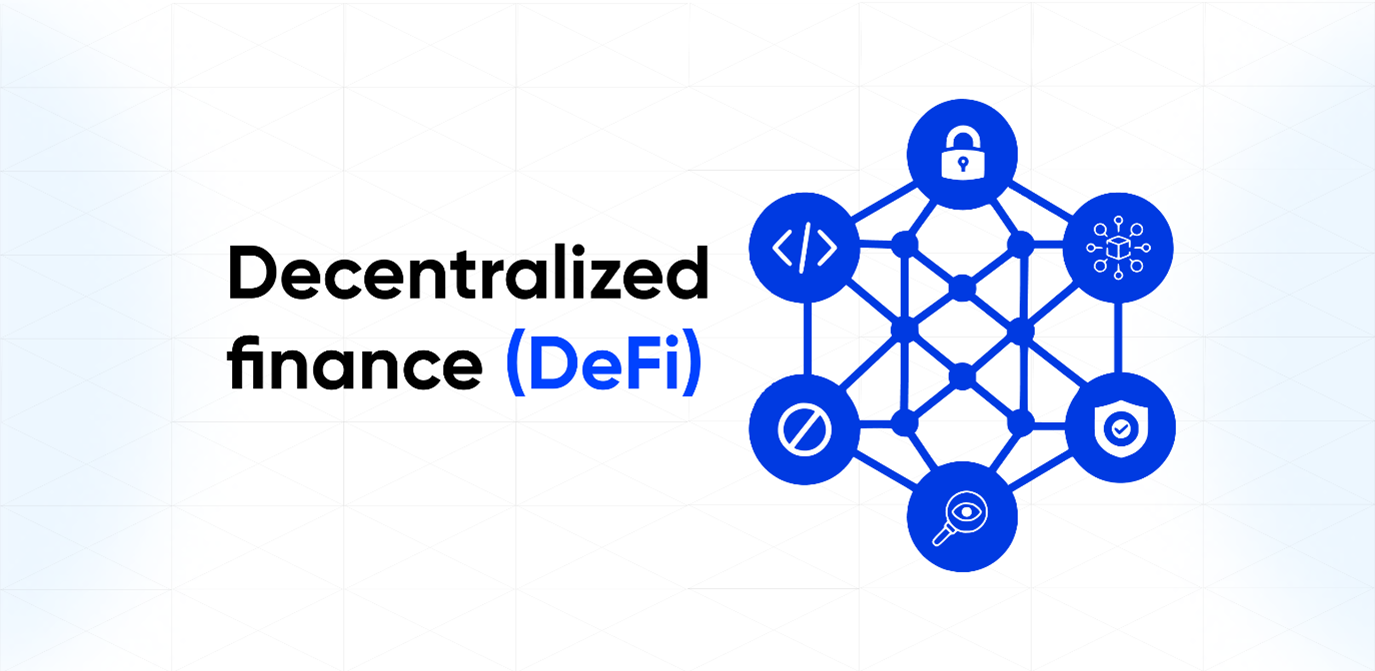
NFT Collateralization: In decentralized finance (DeFi), NFTs can be used as collateral for loans or other financial products. For example, a player could take out a loan using an in-game NFT as collateral, allowing for new ways to leverage digital assets in a DeFi ecosystem.
NFT Pools and Lending: Some platforms are enabling users to pool their NFTs together and lend them to other players for a fee. This allows players who own rare or valuable NFTs to earn passive income while others use these assets for gameplay.
10. Anti-Cheat and Transparency
In-Game Integrity:NFTs can reduce cheating and fraud by ensuring the legitimacy of in-game assets. Since NFTs are recorded on a blockchain, it’s easier to verify the authenticity of items and prevent counterfeit goods from circulating within the game.
Fairness and Transparency: With blockchain technology, players can be assured of fair distribution and rarity of items. Developers cannot artificially inflate the scarcity of items, as the blockchain provides full transparency regarding the creation and distribution of each NFT.
Conclusion
The integration of NFTs into games for unique, tradable in-game assets has opened up new possibilities for players, developers, and the entire gaming ecosystem. NFTs provide players with real ownership, the ability to trade assets, and the opportunity to monetize their time and efforts. For developers, NFTs offer a way to create new economic models and a deeper connection with their player base. The combination of digital ownership, scarcity, and interoperability will likely drive the future of gaming and create more immersive, player-centric experiences.



